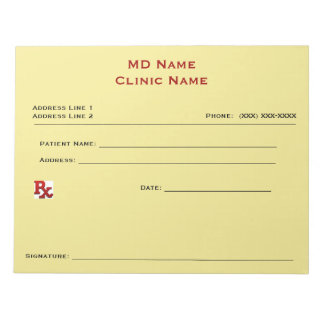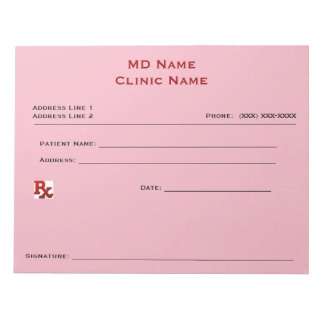Have you ever wondered what your practice looks like to physicians looking to join or to potential acquirers?
If you had to look at a number of physician practices and determine which practice has the best prospects for the future, could you pick it?
Although the methodologies for different-sized practices vary, the principles are the same. When outsiders evaluate your practice for an acquisition, one element they consider are potential synergies between the practices. The value proposition may be greater when practices combine because of increased market strength, cost advantages, complementary services and/or increased service offerings, or extended geographic range.
The value proposition depends on whether you are an investor, acquirer, or employee. Some characteristics of an attractive practice include: a high return on equity, sustainable and consistent growth in revenues and earnings, growth and size of market value, market leadership, service offerings aligned with patient needs and wants, and changing to stay at the forefront of the market. It is helpful to do a valuation as part of the analysis of a practice. Valuations can be done when selling a practice to investors, merging with another group, or when adding/removing a physician partner.
That being said, valuations change over time and not all acquisitions are a good deal. Here is some guidance for how practice owners can view their practices as outsiders and questions for physicians to ask as they contemplate joining a practice, especially as a future partner.
There are three basic approaches to valuations:
Income– There are several different income methodologies, with discounted cash flows being the most common. This approach considers expected income and risk adjusted returns.
Market– Revenue or earnings before interest, tax, depreciation and amortization (EBITDA) multiples of comparable practices may be used along with adjustments for risk or particular strengths of a practice.
Asset– This approach attempts to get a picture of business value by viewing the practice as a combination of assets and liabilities. It is based on the economic principle of substitution, which examines the cost to create a similar business that can produce the same economic benefit or utility.
Aside from the formulaic approach of a valuation, there are many quantitative and qualitative factors to consider when evaluating a practice. Some factors will be more dominant than others. To determine the weightings, you must have an understanding of the medical specialty and critical success factors of practices within that specialty. In addition, it is important to determine what is relevant and what is not.
Here are six areas to evaluate the prospects of a physician practice:
1. Market
- What is the size of the market?
- Is the market growing, maturing or declining?
- What is the impact of technology and social trends on the market?
2. Competitive landscape
- Is it a highly fragmented market or are there one or more dominant practices?
- What are competitors’ strengths and weaknesses?
3. Market positioning
- What are the practice’s strengths and weaknesses?
- Is it a market leader?
- What is the practice’s market share compared to its competitors?
- What are its competitive advantages?
4. Operations
- Are the business and clinical processes effective and efficient?
- Are there any issues in the physician governance?
- Are there concerns with any of the offered services?
5. Strategy
- Is the practice growing through acquisitions or organically?
- Are the marketing plans effective?
- Are the operational strategies effective?
6. Practice management
In a small practice, the effectiveness of the management team can be evaluated more readily than in a large practice. Understanding the culture and effectiveness, as well as any shortfalls, of the management team is critical.
As the economic and market factors change, how does management react to the changes? For instance, a decline in revenues may occur because of market or economic conditions. Does management react in a way that helps the practice remain profitable and still postured for future growth? Cutting expenses is a great short-term solution that can have detrimental long-term consequences if not done properly.
- Is management being rewarded only on short-term results or are there long-term incentives in place?
- Does the practice’s culture contribute to growth and value maximization?
- Do they respond to patient needs effectively?
When evaluating your practice, go beyond the historical growth rates. You need to see how changes in the market and business environment will affect the practice. As a result, you will be evaluating a number of internal and external factors that affect the entire physician practice. Look at how the practice responds to changes in patient needs, market trends, and technology. Determine if your practice is agile and able to change its course when necessary. If not, ask yourself if this is a red flag with regards to physician governance.
Valuations can be done at any time and are a useful way to see the bigger picture. It’s always a good idea to assess your practice, look at the competition, attract new talent, and improve patient care. At the end of the day, employees and investors want to know if your practice is a winner both now and in the future.
15% Off Medical Practice Supplies
 Manual Prescription Pad (Large - Yellow)
Manual Prescription Pad (Large - Yellow)
 Manual Prescription Pad (Large - Pink)
Manual Prescription Pad (Large - Pink)
 Manual Prescription Pads (Bright Orange)
Manual Prescription Pads (Bright Orange)
 Manual Prescription Pads (Light Pink)
Manual Prescription Pads (Light Pink)
 Manual Prescription Pads (Light Yellow)
Manual Prescription Pads (Light Yellow)
 Manual Prescription Pad (Large - Blue)
Manual Prescription Pad (Large - Blue)
 Manual Prescription Pad (Large - White)
Manual Prescription Pad (Large - White)
 Manual Prescription Pad (Large - Yellow)
Manual Prescription Pad (Large - Yellow) Manual Prescription Pad (Large - Pink)
Manual Prescription Pad (Large - Pink) Manual Prescription Pads (Bright Orange)
Manual Prescription Pads (Bright Orange) Manual Prescription Pads (Light Pink)
Manual Prescription Pads (Light Pink) Manual Prescription Pads (Light Yellow)
Manual Prescription Pads (Light Yellow) Manual Prescription Pad (Large - Blue)
Manual Prescription Pad (Large - Blue)























